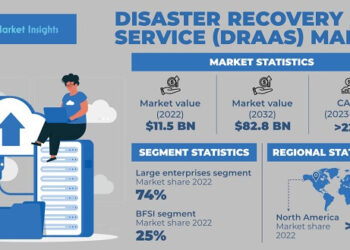Clogged water pipes can be one of the rather troublesome situations that any household can encounter. Fortunately, dealing with clogged water pipes doesn’t always require calling a plumber. Below are some tips to help you quickly and effectively handle clogs.

1. Understanding The Causes of Clogs
First and foremost, you need to understand the causes of clogs. Clogs can result from grease buildup, hair, food, or foreign objects falling into the water pipes. Identifying the cause will help you choose the appropriate method of dealing with it.
1.1. Grease Buildup
Grease buildup is one of the most common causes of water pipe clogs. Grease buildup typically includes oils, soap, and other chemicals in the water. As water flows through the pipes, grease particles adhere to the pipe’s surface and accumulate over time, forming a thick layer. This reduces the diameter of the water pipe and ultimately leads to clogs.
How to Identify: If you suspect a clog due to grease buildup, you can check by placing a drain snake into the toilet or sink drain and performing a gentle pumping and twisting motion. If water starts to flow out forcefully, and the grease buildup begins to dissolve, that’s a sign of a clog caused by grease buildup.
1.2. Hair
Hair is another common cause of water pipe clogs, especially in areas where showerheads are used frequently. When hair falls into the pipes, it can stick to existing grease buildup or other objects, creating a blockage. Hair can persist in the pipes for a long time before causing a significant clog.
How to Identify: To determine if hair is causing a clog, you can use a brush to perform a pumping and twisting motion inside the water pipe. If you see hair starting to flow out, it’s a sign of a hair-related clog.
1.3. Food
Food can also cause clogs in water pipes, particularly in kitchen drain systems. Oils and small food particles can adhere to the pipe’s surface and create blockages. When food debris accumulates, it can form a clog.
How to Identify: If you suspect a food-related clog, you can check by using a drain snake and placing it in the kitchen sink or dishwasher drain. If water starts to gush out forcefully, and you feel some obstruction, that’s a sign of a clog caused by food.
1.4. Foreign Objects
Accidentally dropped foreign objects can also cause pipe blockages. This can include items like phone cases, hairbands, children’s toys, or any object that falls into the toilet or sink.
How to Identify: To check for foreign objects causing a clog, you can use a drain snake and perform a pumping and twisting motion. If you feel resistance and the water doesn’t flow out forcefully, there may be an object lodged inside.
Understanding the root causes of water pipe clogs is an essential part of effectively addressing this issue. By identifying the source of the clog, you can choose the appropriate method of handling it and prevent this problem from recurring in the future. This helps maintain your water pipe system in good working condition and ensures the comfort of your family.
2. Distinguishing Between Light and Severe Blockages: Identifying the Appropriate Remedial Methods
Distinguishing between light and severe blockages in a water pipe system is a crucial step in determining the appropriate method of dealing with them. Each type of blockage requires a different approach and tools for removal. In this section, we will delve into how to recognize the degree of blockage in water pipes and provide specific measures for each case.
2.1. Light Blockages
Details:
Light blockages typically occur when there is a small amount of grease buildup, hair, or food residue clinging to the water pipes. Signs of a light blockage are usually not too severe and include:
Reduced Water Pressure: If you notice a significant decrease in water pressure in your shower or toilet, it may be a sign of a light blockage.
Slow Water Flow: When you turn on the tap or flush the toilet, the water flow may be slow and not as strong as usual.
Unusual Sounds: You may hear unusual sounds in the water pipes, such as gurgling or inconsistent water flow.
Remedial Methods:
When encountering a light blockage, you can easily address it yourself by using the following methods:
Use a Drain Snake and Brush: First, try using a drain snake and brush to push hair and grease buildup out of the pipe. This is often sufficient to resolve a light blockage.
Use Pipe Cleaning Chemicals: If the blockage persists after using a drain snake, you can use specialized pipe cleaning chemicals designed to dissolve grease buildup.
2.2. Severe Blockages
Details:
Severe blockages occur when there is a significant amount of grease buildup, hair, or large objects trapped in the water pipes. Signs of severe blockages are typically more serious and include:
Complete Loss of Water Pressure: In cases of severe blockage, water pressure may be completely lost, with no water flowing out of the shower or toilet.
Water Overflow: If you turn on a water source, and water begins to overflow from an unexpected location, it’s a clear sign of a severe blockage.
Backflow of Water: Water starts flowing back up from the nearest toilet or shower to the blockage point.
Remedial Methods:
In cases of severe blockages, you need to deal with them carefully and may require assistance from a professional. Here are some methods you can try:
Use a Plumbing Snake: A plumbing snake is a long, flexible tool that can be inserted into the pipe to push or pull out objects causing the blockage.
Strong Chemicals: If the blockage is extremely severe, you may need to use stronger chemicals to remove grease buildup. However, use them with caution and follow the manufacturer’s instructions.
Call a Professional Plumber: In cases of severe blockages, if you are unable to resolve them yourself, it’s advisable to call a professional plumber. They have the experience and equipment to handle the most challenging blockages.
Distinguishing between light and severe blockages is a crucial step in addressing water pipe issues. By identifying the level of blockage, you can apply the appropriate remedial methods, from using a drain snake and brush for light blockages to using a plumbing snake or calling a professional plumber for severe blockages. This helps you maintain your water pipe system in good working condition and saves time and effort on repairs.

3. Effective Remediation Techniques
3.1. Using a Drain Snake and Brush
When you encounter blockages in your household water pipe system, using a drain snake and brush is one of the simple and effective methods to address the issue, especially when the blockage is not too severe. This method not only saves time but also helps you maintain a well-functioning water pipe system without the need for strong chemicals or calling a plumber. Below, we will detail how to use a drain snake and brush to deal with blockages.
How to Use a Drain Snake
Details:
A drain snake, also known as a plunger or plumber’s snake, is a simple yet highly effective tool for clearing blockages in toilets or sinks. Here’s how to use a drain snake:
- Place the drain snake over the opening of the toilet or sink. Ensure that the mouth of the drain snake is tightly sealed against the surface to create a seal, preventing air from escaping.
- Perform a pumping and gentle twisting motion. Use your hand to pump and twist the drain snake up and down several times. This creates pressure in the water pipe, helping to push debris out of the blockage.
- Check the water pressure. If the blockage has been removed, you will notice an increase in water pressure in the pipe. Try turning on the water to see if the blockage has been completely cleared or if there is still some residue.
Important Note: When using a drain snake, make sure you have properly sealed off other openings so that water does not escape. Additionally, position it to cover the opening of the toilet or sink tightly to prevent air from escaping, creating the necessary pressure.
How to Use a Brush
Details:
A brush is a commonly found tool in every household, but not everyone knows that it can be used to deal with blockages in water pipes. Here’s how to use a brush to remove blockages:
- Choose an appropriate brush. Select a brush with stiff bristles and a pointed tip to effectively push hair and debris out of the pipe.
- Remove the toilet or sink lid (if necessary). If the blockage is deep inside, you may need to remove the toilet or sink lid to gain easier access to the water pipe.
- Use the brush to push hair and debris out of the pipe. Gently insert the brush into the pipe and perform a twisting and pushing motion to dislodge hair and debris. Be careful and gentle to avoid damaging the water pipe.
- Check the water pressure. After you’ve attempted to clear the blockage with the brush, try running the water to check if the blockage has been completely cleared.
Important Note: Always ensure that you are using a brush that can be disposed of after use. Do not use the same brush for other purposes after using it to handle blockages.
3.2. When to Use a Drain Snake and Brush
Using a drain snake and brush is an effective method when the blockage is not too severe and is caused by grease buildup, hair, or food residue. Here are some situations in which you can apply this method:
When you experience a significant decrease in water pressure in the shower or toilet.
When the water flow is slow and not as strong as before.
When you hear unusual sounds in the water pipes, such as gurgling or inconsistent water flow.

4. Using Drain Cleaning Chemicals
When you encounter blockages in your household water pipe system, and the method of using a drain snake and brush doesn’t resolve the issue, using drain cleaning chemicals may be the next option. These chemicals are specially designed to dissolve grease buildup and remove blockages in water pipes. However, using drain cleaning chemicals requires caution and adherence to the manufacturer’s instructions. Below, we will detail and specify how to use drain cleaning chemicals to address blockages.
4.1. Types of Drain Cleaning Chemicals
Details:
Before selecting a drain cleaning chemical, you need to have a clear understanding of the type of blockage you are dealing with. There are various types of drain cleaning chemicals designed to address specific blockages. Here are some common types:
Grease-Dissolving Chemicals: These types typically contain substances that break down oils, fats, and grease buildup. They help dissolve grease and remove blockages caused by it.
Hair Removal Chemicals: If the blockage is primarily due to hair, you can choose chemicals that contain hair-dissolving agents.
Strong Chemicals: For severe and challenging blockages, there are strong chemicals available that contain more powerful dissolving agents.
Important Note: Before using any type of chemical, make sure you have read the instructions and warnings provided by the manufacturer. Drain cleaning chemicals can be harmful to health if not used correctly.
4.2. How to Use Drain Cleaning Chemicals
Details:
Once you have chosen the appropriate drain cleaning chemical for your blockage situation, follow these steps to use the chemical effectively:
Read the instructions: Before using any type of chemical, carefully read the manufacturer’s instructions. These instructions provide crucial information on how to use the chemical, dosage, required exposure time, and safety precautions.
Ensure safety: Wear safety goggles and gloves before working with drain cleaning chemicals. Chemicals can cause skin and eye irritation if they come into direct contact.
Follow the instructions: Use the type of chemical you have chosen according to the manufacturer’s instructions. Typically, you will need to pour the chemical into the blocked area and let it work for a specified amount of time.
Allow the chemical to work: To give the chemical time to dissolve grease buildup or hair, let it work for the prescribed duration before flushing the pipe with water.
Thoroughly rinse: After the chemical has completed its job, rinse the pipe with clean water. This helps remove any remaining chemical residue and ensures safety for future use.
Important Note: Never mix different types of chemicals. Use one type of chemical at a time, and never combine them. This can create hazardous chemical reactions.
4.3. When to Use Drain Cleaning Chemicals
Details:
The use of drain cleaning chemicals should be considered when:
The blockage cannot be removed by using a drain snake and brush.
The blockage results in a complete loss of water pressure or causes water to backflow from the nearest toilet or sink.
You have identified the type of blockage and have selected the appropriate chemical.
However, it’s important to note that using chemicals is not always the best choice. Chemicals can be harmful to the environment and human health if not used correctly. If the blockage persists after using chemicals, consider calling a professional plumber to avoid worsening the situation.

5. Using Boiling Water to Clear Clogs
One of the natural and effective methods for clearing clogs in your plumbing system is to use boiling water. This method is not only safe for health and the environment but also simple and cost-effective. In this section, we will provide a detailed explanation of how to deal with clogs using boiling water, including the procedure and important considerations.
5.1. Procedure for Clearing Clogs with Boiling Water
Details:
Clearing clogs with boiling water is a straightforward and effective method, especially when the clog is caused by grease or easily soluble substances. Here is the specific procedure to follow:
Prepare boiling water: First, bring water to a boil. You can use an electric kettle or a pot to do this. Make sure you boil enough water to pour evenly and fully into the toilet or sink.
Pour boiling water into the drain: Once the water is boiling, carefully pour it into the clogged drain. Be cautious and ensure that you do not spill boiling water on your skin or around the area.
Allow the boiling water to work: Boiling water has the ability to dissolve grease and eliminate clogs. Wait for about 15-20 minutes for the boiling water to work. During this time, the boiling water will heat up and dissolve the substances causing the blockage, allowing them to be easily flushed away by running water.
Flush the water: After you have let the boiling water work in the drain for the necessary amount of time, flush the water down the drain. Note that the water may still be hot, so be careful to avoid burns.
Check water pressure: Open the faucet or flush the toilet to check if the clog has been completely cleared. If water pressure has returned to normal, and there are no signs of a clog, the task is complete.
5.2. Important Considerations
Details:
Although clearing clogs with boiling water has benefits and is safe, it is essential to observe some important considerations:
Safety: Always ensure your safety. When boiling water, be cautious to avoid burns. In particular, take care when pouring boiling water into the drain to prevent it from spilling on your skin.
Waiting time: Wait for the appropriate amount of time for the boiling water to work. Do not rush to flush the water before it has completed its task.
Not suitable for severe clogs: This method is typically ineffective for severe clogs or those caused by hard objects. In such cases, consider alternative methods or seek help from a professional plumber.
Environmental impact: Boiling water is a safer method for the environment compared to chemical cleaners. However, be careful not to spill boiling water into the natural environment, especially in cases where the water contains harmful or contaminated substances.
5.3. When to Use Boiling Water
Details:
Using boiling water is a useful method when:
- The clog is caused by grease or easily soluble substances.
- You prefer a safe and natural method to clear clogs.
- The clog is not severe, and you have the time to perform this procedure.
However, keep in mind that boiling water is not always the best choice, especially for severe clogs or those caused by hard objects. In such situations, consider alternative methods or seek help from a professional plumber.

6. Regular Water Pipe Cleaning
Regularly cleaning your water pipes is an essential part of maintaining a clean and healthy water supply system for your family. The accumulation of residue, hair, food particles, and other objects in the water pipes can lead to blockages and reduce the system’s efficiency. In this section, we will examine in detail why and how to clean water pipes regularly.
6.1. Why Is Regular Pipe Cleaning Necessary?
Details:
Regularly cleaning water pipes is necessary for several reasons:
Preventing clogs: When you clean your water pipes regularly, you help remove residue, hair, and other objects before they accumulate and cause blockages. This helps maintain a strong water flow and prevents sudden clogs.
Protecting health: Residue and contaminants in water pipes can create an ideal environment for the growth of harmful bacteria and microorganisms. Cleaning the pipes ensures that the water used for drinking and daily activities remains safe for your family’s health.
Conserving water and energy: When water pipes are clogged, more water is needed for everyday tasks like washing dishes, bathing, or car washing. This leads to water and energy waste.
Maintaining pipe integrity: Regularly cleaning water pipes helps to maintain their integrity and ensures a smooth water flow. This can extend the lifespan of your plumbing system and reduce the need for pipe replacements.
6.2. Cleaning Frequency
The frequency of cleaning water pipes can vary depending on usage and the specific condition of the system. However, here is a general guideline:
For preventing clogs: If you want to prevent clogs from occurring, consider cleaning your water pipes at least once a month or when you notice a decrease in water pressure or slow water flow.
Regular maintenance: Pipe cleaning should be part of your routine maintenance. Consider cleaning your water pipes at least once a year to ensure optimal performance.
Using a water pressure pump: If you have a water pressure pump, you can use it to clean the water pipes once every 2-3 years.
7. Conclusion
Remember that dealing with water pipe blockages should not be taken lightly, as it can cause damage to the plumbing system and lead to more serious issues. By following the guidelines above, you can quickly and effectively address blockages, safeguarding the clean water supply in your family’s home. Tips for dealing with water pipe blockages quickly and effectively.























Discussion about this post